To mark the 60th anniversary of the Julius Baer Foundation, we are launching the '60 facts on wealth inequality' series. It sheds light on the causes and far-reaching consequences of wealth disparity – and its impact on individuals, communities, and the social and economic fabric of society.
In this third episode of the 60 Facts on Wealth Inequality series, we explore the intricate, two-way link between climate change and wealth inequality. Evidence shows that the two are deeply intertwined — climate change both drives and is driven by wealth disparities. The effects play out across and within countries, exacerbating existing divides.
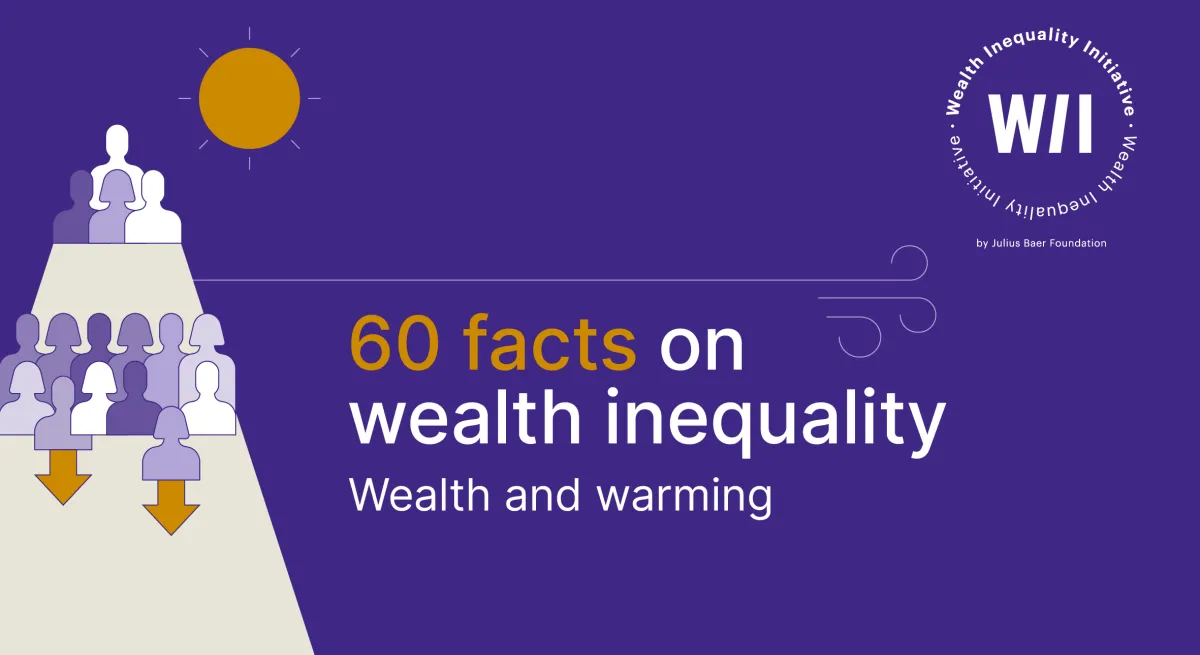
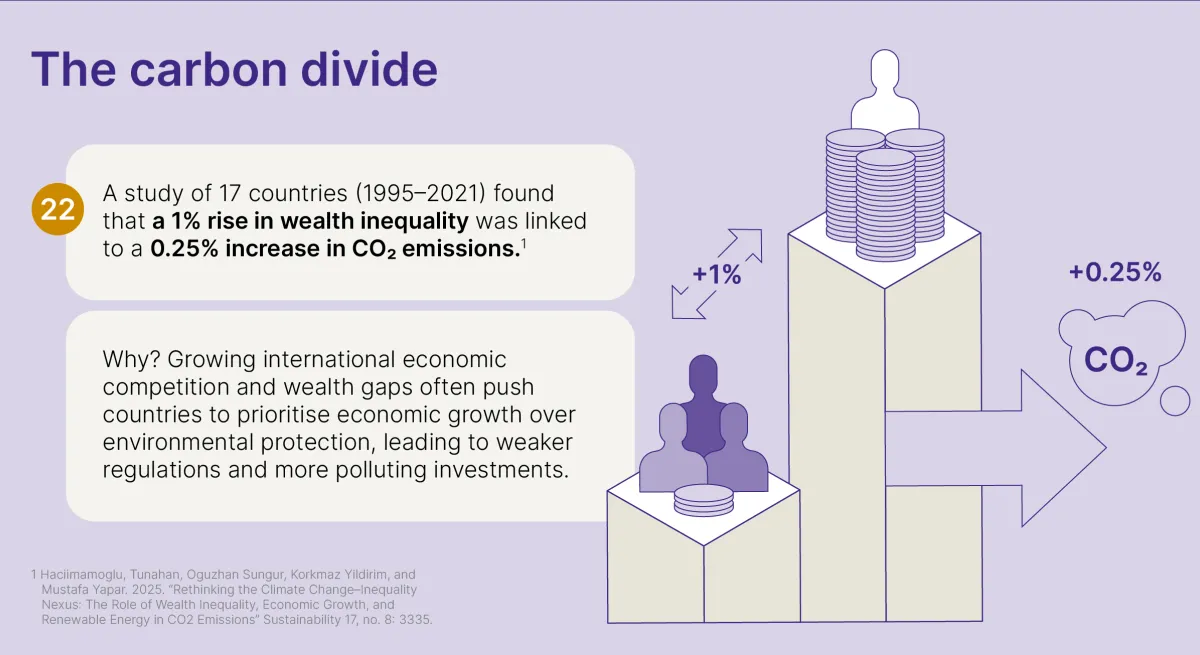
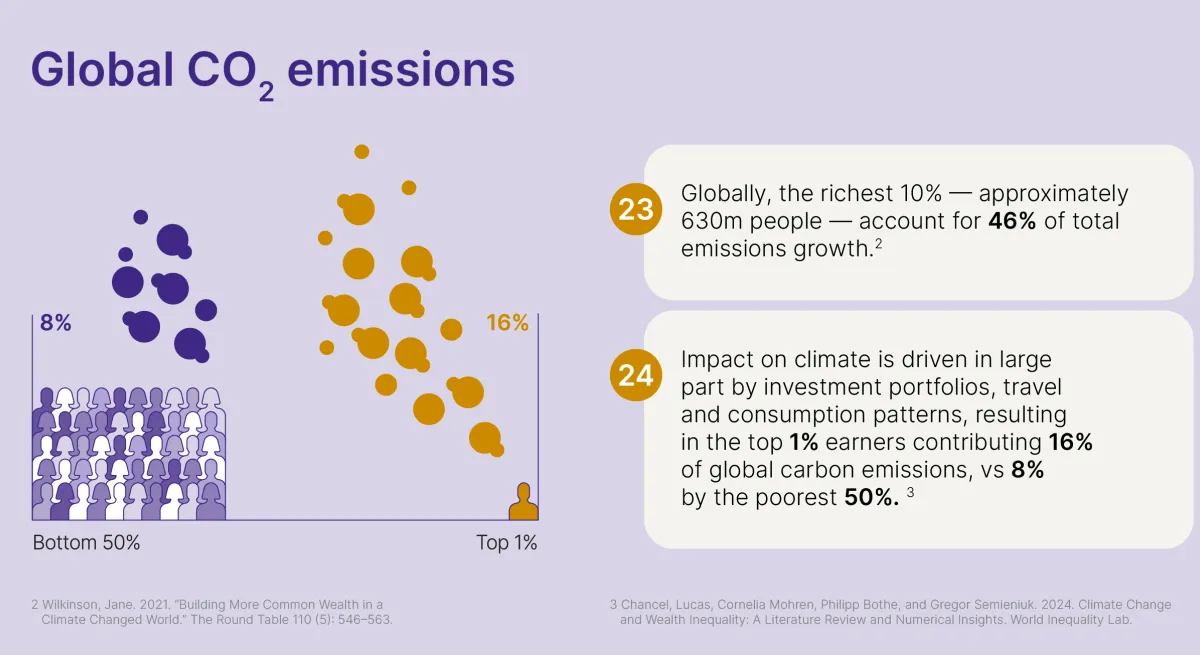
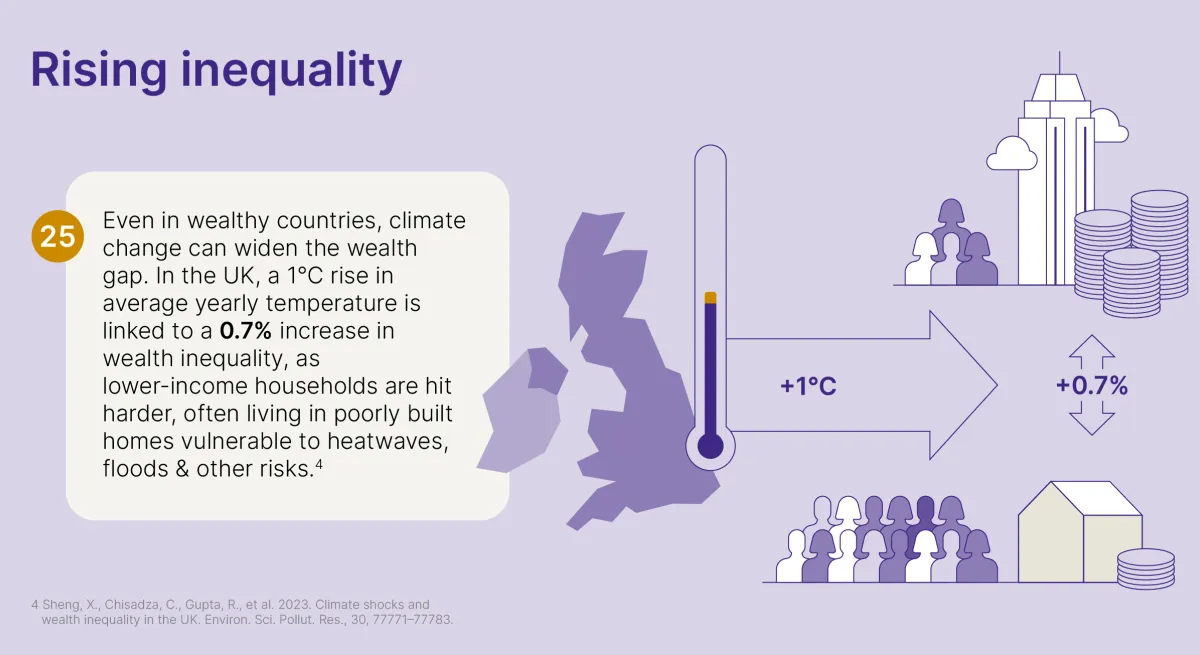
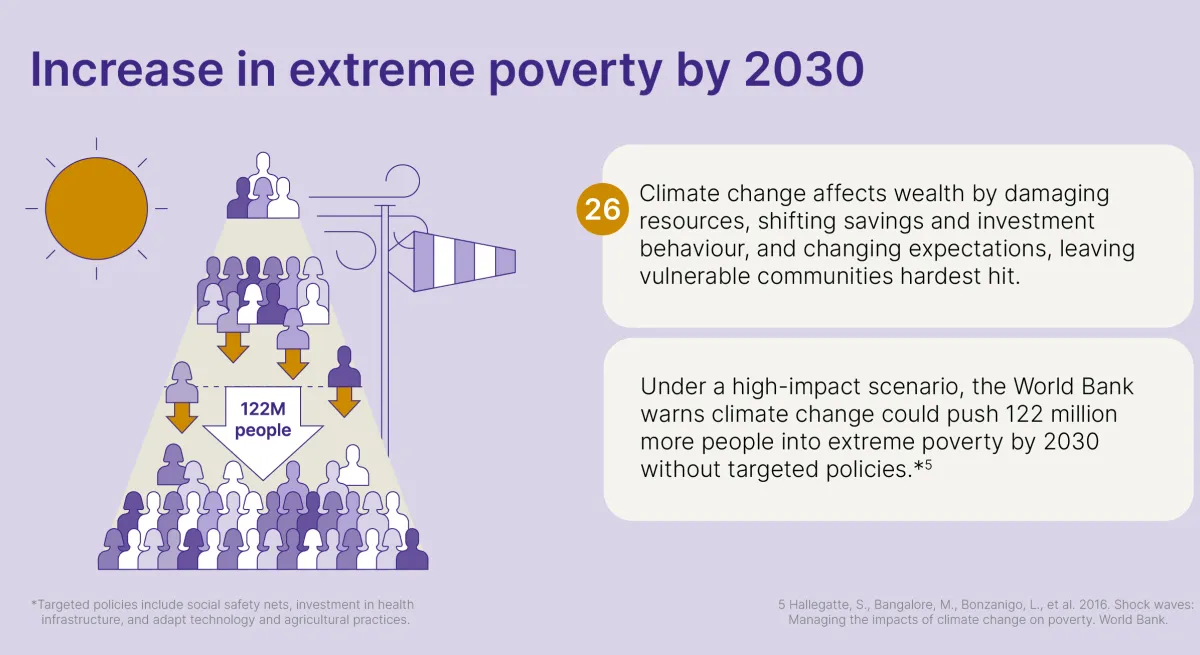
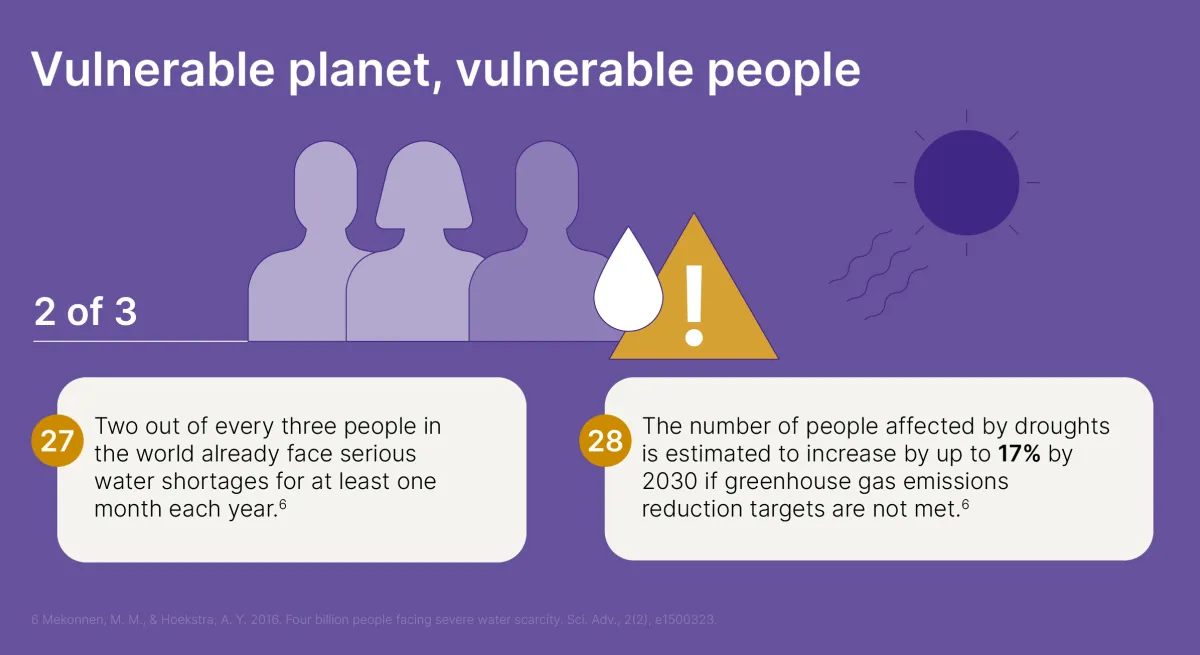
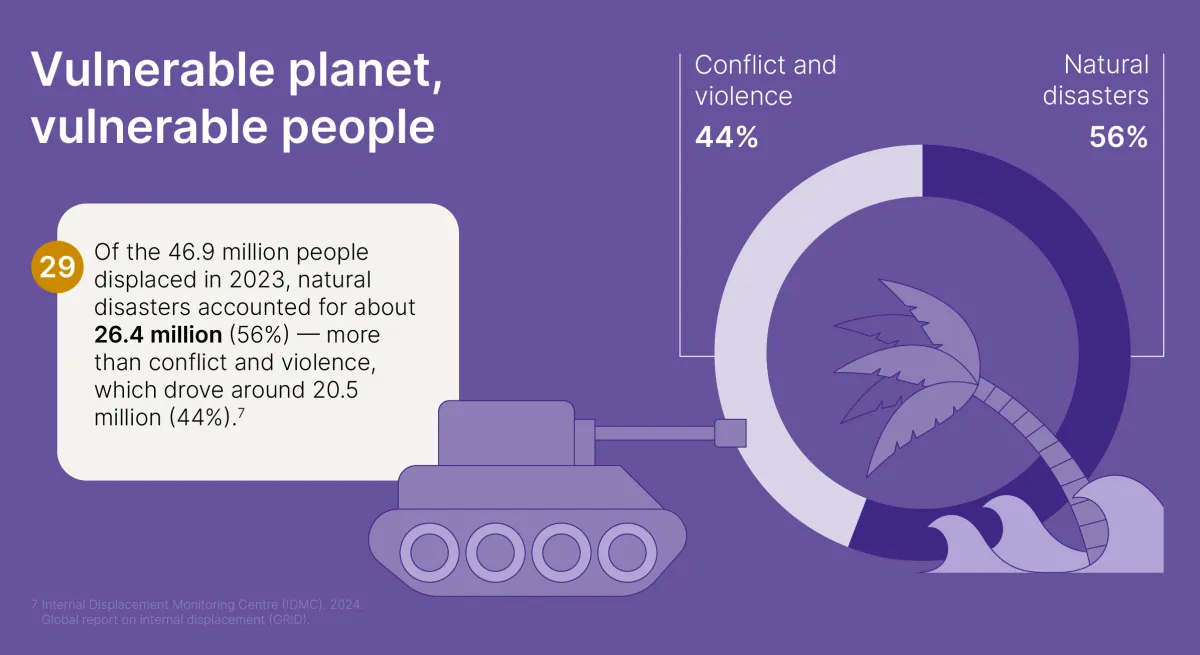
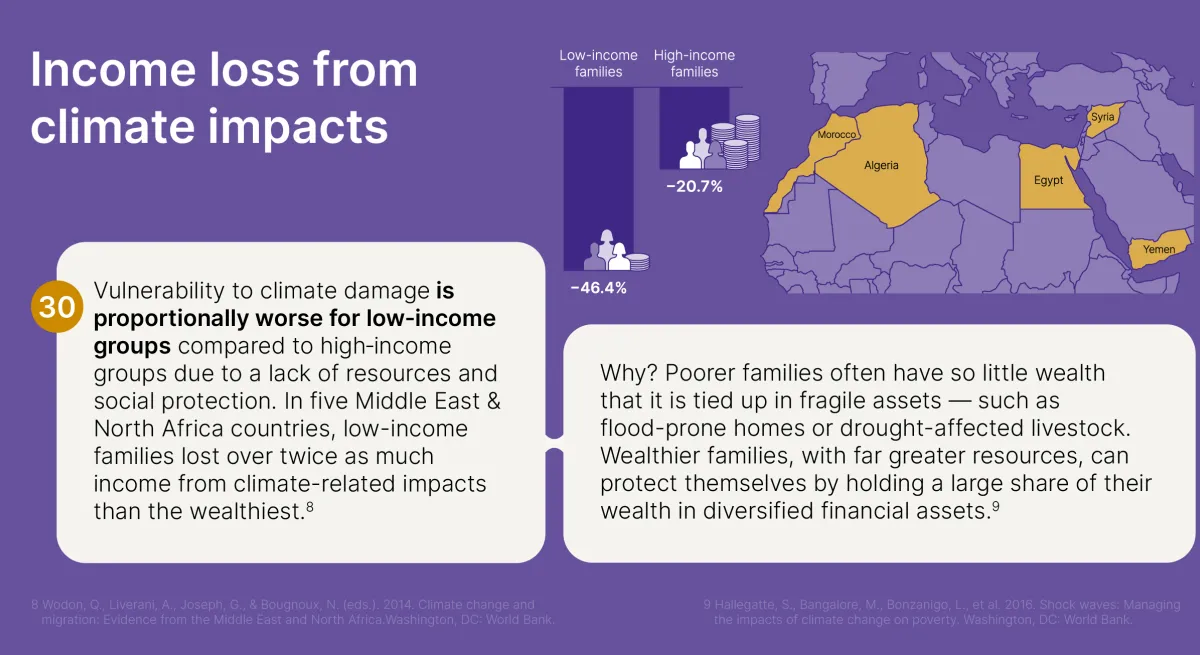
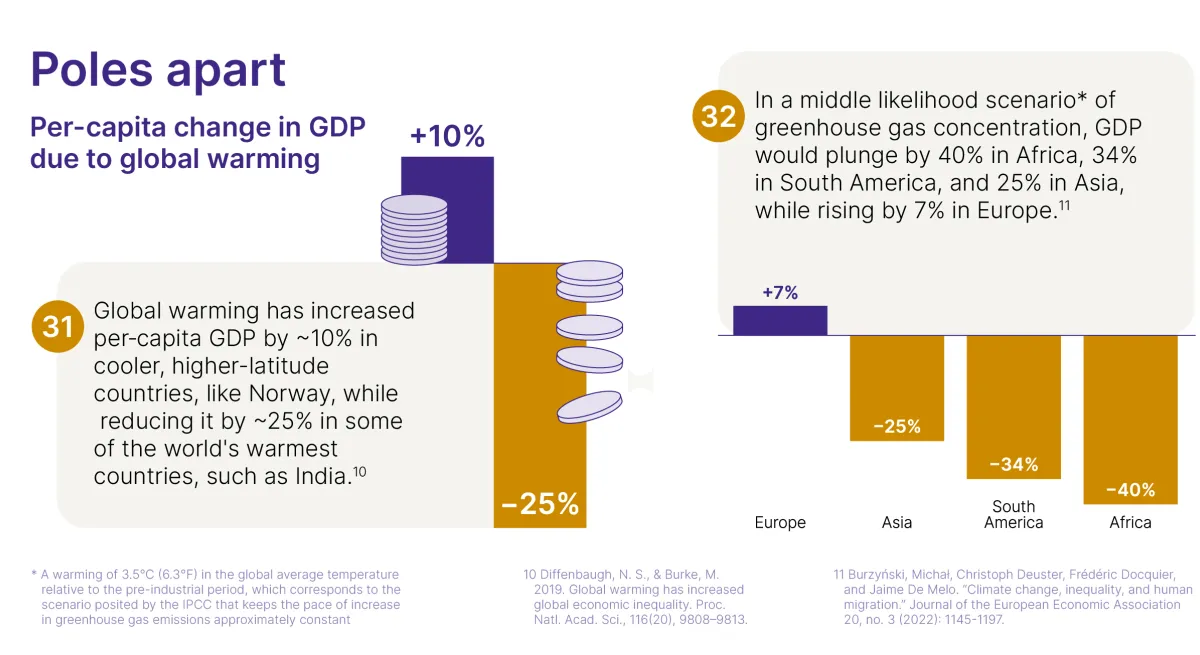
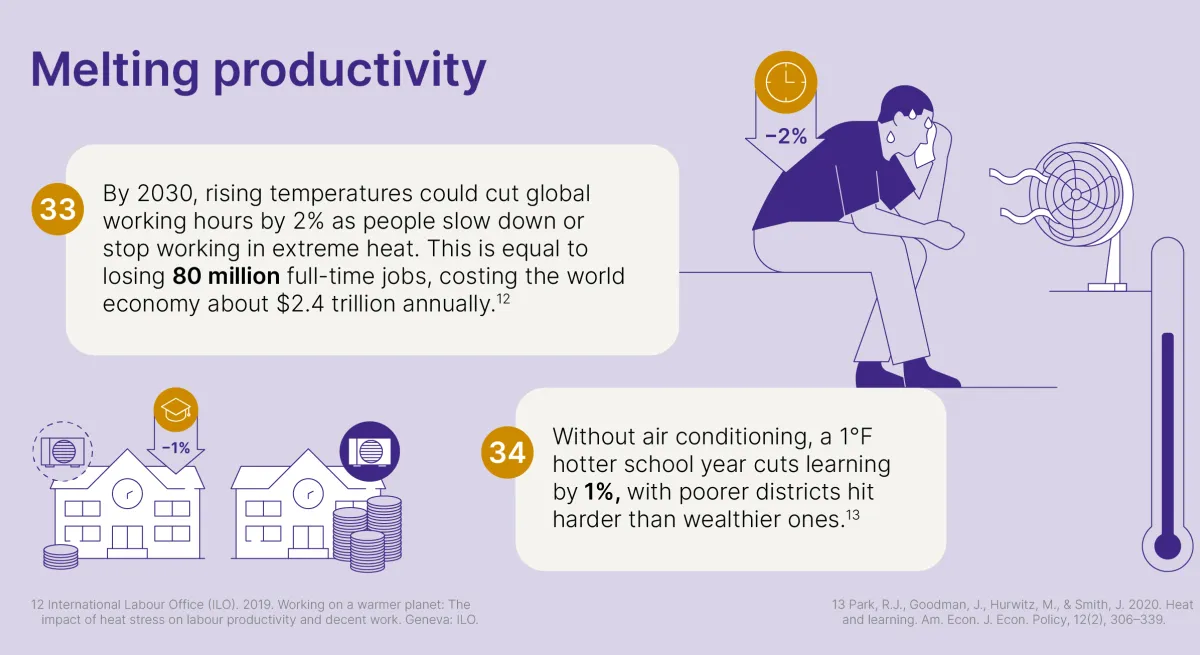

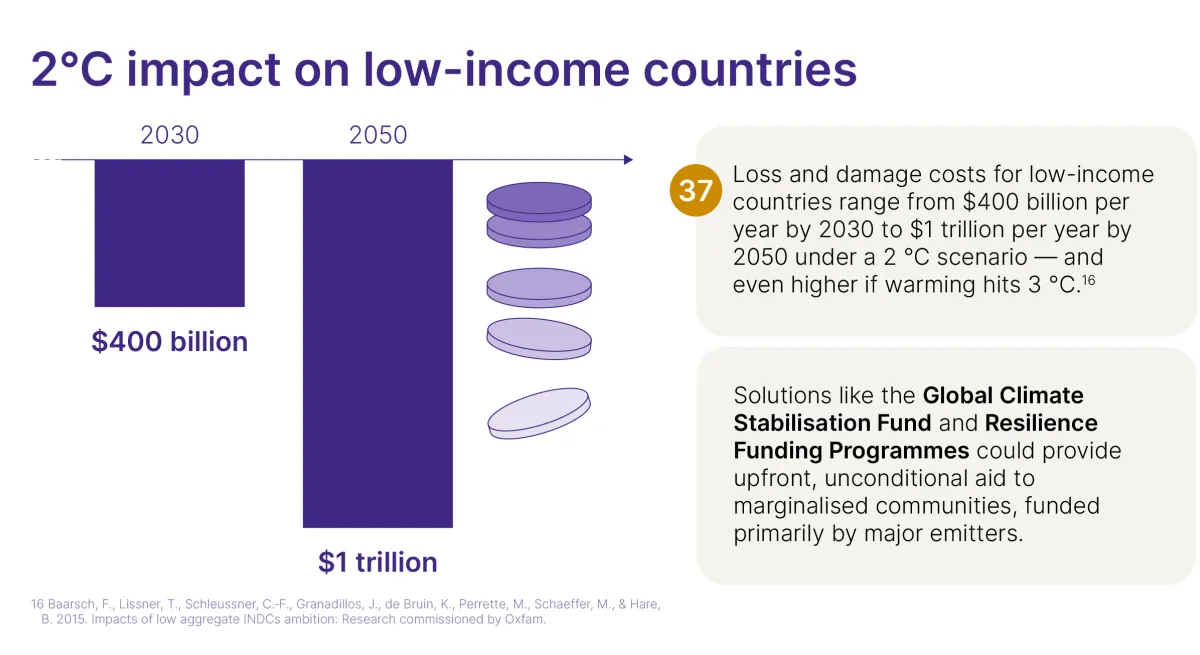
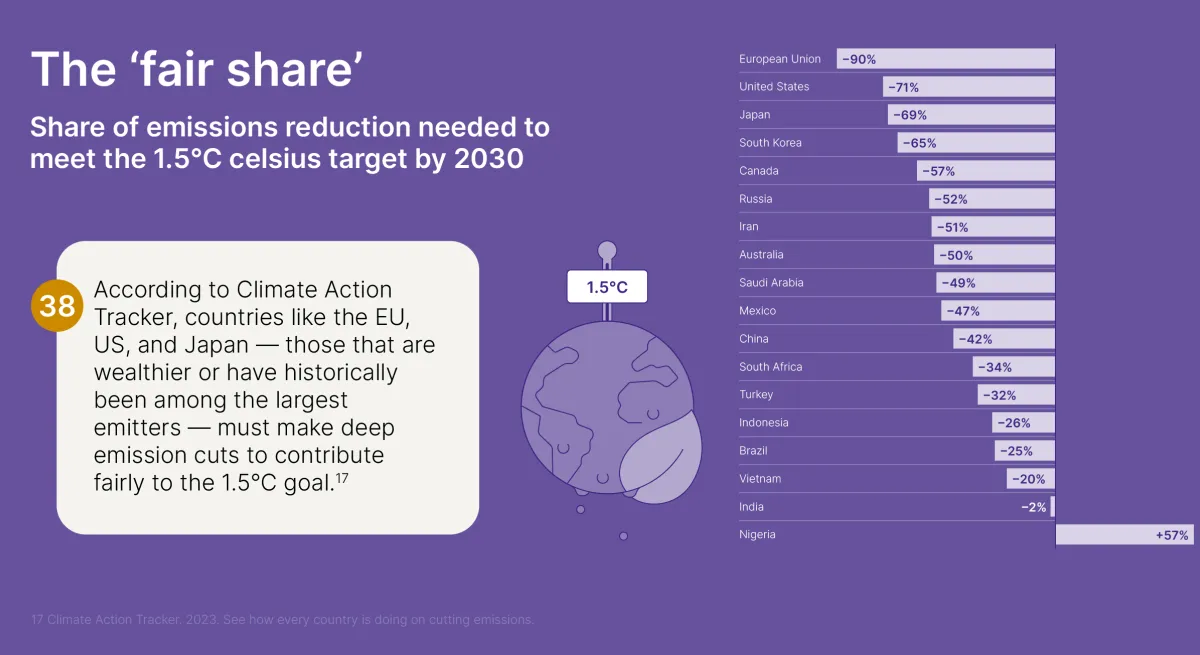
A vulnerable planet, unequal impacts
The burden of climate change is not shared equally. Low-income groups and countries are the hardest hit due to their geographic exposure, limited resources, and inadequate social protection systems. These vulnerabilities magnify the effects of climate damage, pushing many further into poverty.
Economic losses are disproportionately higher for the poorest: in five Middle East and North Africa countries, low-income families lost more than twice as much income from climate-related impacts as their wealthiest peers. Asset fragility compounds risk: poorer households often hold their wealth in vulnerable forms — such as flood-prone homes or drought-affected livestock — while wealthier families can protect themselves through diversified financial assets. At the same time, differences in investment patterns, travel and consumption mean that higher-income groups – including the top 1% of earners, who are responsible for around 16% of global carbon emissions – have a greater environmental footprint than those with the least. Uneven economic effects are also stark: global warming has increased per-capita GDP by around 10% in cooler, higher-latitude countries such as Norway, but reduced it by roughly 25% in some of the warmest countries, such as India.
Climate change worsen inequality everywhere
Climate change does not only hit poorer countries. Even in wealthy nations, it can deepen the wealth gap. In the UK, for example, a 1°C rise in the average annual temperature is associated with a 0.7% increase in wealth inequality, as lower-income households — often in poorly insulated homes — bear the brunt of heatwaves, floods, and other risks.
The ripple effects are global: rising temperatures could cut working hours by 2% by 2030 — the equivalent of 80 million full-time jobs — costing the world economy $2.4 trillion annually. Educational outcomes also suffer; without air conditioning, a 1°F hotter school year reduces learning by 1%, with poorer districts hit hardest.
Why we all have a stake
While low-income groups and countries take the hardest immediate hits, the consequences of climate inaction are shared by all. Extreme weather events, loss of resilience, mass displacement, declining productivity, and reduced access to education affect social stability and long-term prosperity everywhere.
Projected costs are staggering under a 2°C warming scenario, loss and damage costs for low-income countries could reach $400 billion annually by 2030, and up to $1 trillion by 2050.
What needs to change
Addressing the dual crisis of wealth inequality and climate change requires action on multiple, interconnected levels. Structural measures from regulators and public authorities are essential to put in place robust adaptation and mitigation policies, ensuring that contributions to address climate change are shared fairly. Financing choices should also shift toward sustainable solutions that reduce, rather than deepen, inequality. Strengthening public institutions to fund climate investments, for example, could raise the bottom 99%’s wealth share from 54% to 74%.
Equally, wealthier nations — and those historically responsible for the largest share of emissions — should take the lead in cutting emissions more deeply and rapidly to meet the 1.5°C target. This responsibility extends beyond national borders, requiring collaboration through multi-stakeholder networks that can scale solutions, share knowledge, and ensure that those most affected by climate damage are also empowered to adapt and thrive.
Our contribution
In line with this approach, the Foundation supports pioneering projects at the intersection of wealth inequality and climate change. These initiatives focus on biodiversity and nature conservation, climate adaptation and mitigation strategies that tackle inequality, and household resilience building to reduce the burden on those most vulnerable to climate-related stresses. By fostering partnerships and funding innovative projects, we aim to contribute to a future where both people and planet can thrive.
PDF 60 facts on wealth inequality and climate change
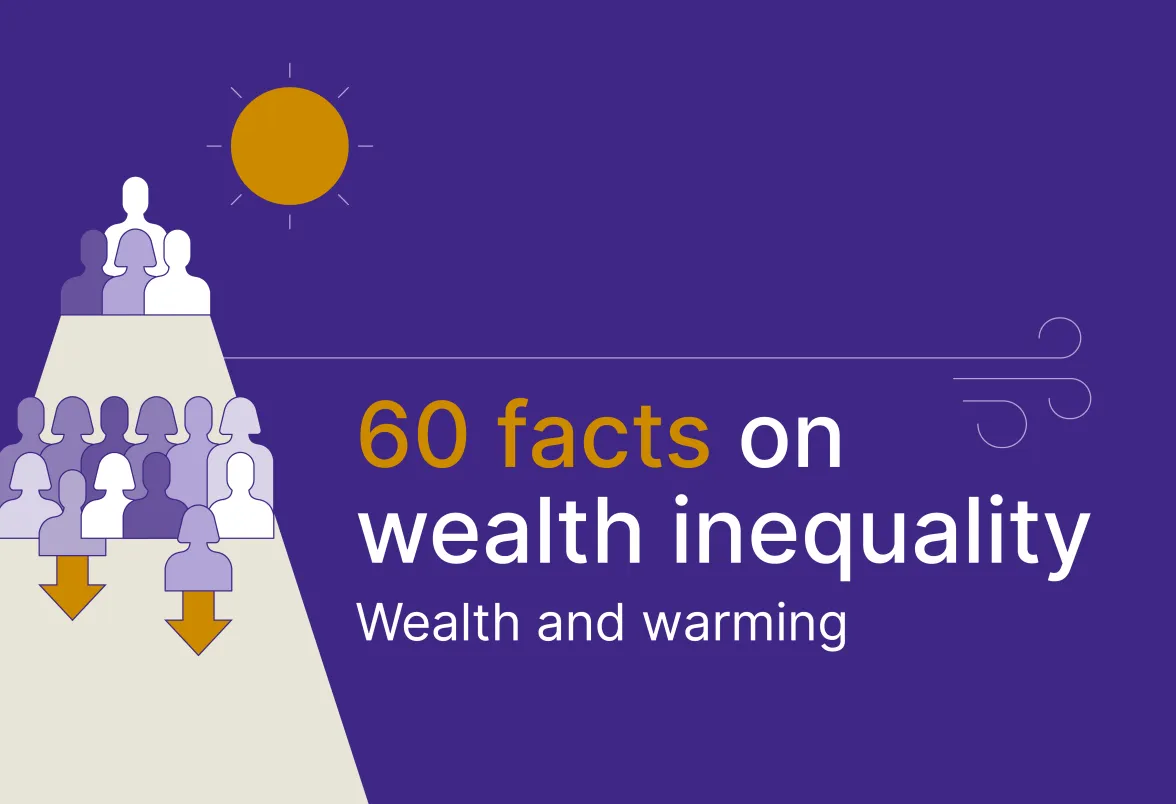
To explore all facts of the third edition and examine the consequences of climate change, please download the PDF here:
